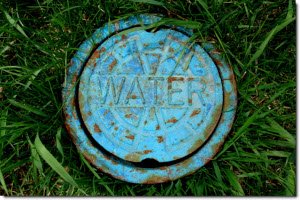Where This Occurs: Ground Water and Drinking Water
Nutrient pollution can affect vital ground water and drinking water sources. Surface waters, like lakes, rivers and streams, provide drinking water for about 170 million people in the United States. Some of these waters are impaired or affected by excessive amounts of nitrogen and phosphorus. Ground water is water that soaks into the soil and into the water table, and close to 90 million people rely on ground water as a drinking water supply. As ground water works its way through the soil, it can pick up nitrogen and phosphorus and transport them to the water table. This polluted water then can reach public drinking water systems and private wells, where it can pose serious public health threats. Public drinking water systems can also bear a substantial financial burden to treat drinking water polluted by nutrients. EPA's 2010 report on nutrients in the nation's streams and groundwater found that nitrate contamination of ground water used for drinking water, particularly shallow domestic wells in agricultural areas, is a growing concern.
Case Study: Waupaca, Wisconsin
The City of Waupaca, Wisconsin, identified elevated levels of nitrate, a form of nitrogen, in its municipal ground water supply in the early 1990s, mainly due to agricultural activities. Highly-permeable soils in the area facilitated filtration of nitrate into the soil, allowing it to easily contaminate the ground water, the primary drinking water source for Waupaca.
The Waupaca government, technical experts and citizens developed a wellhead protection plan, which included the tracking of nitrate levels. The resulting monitoring data was used in land use decision-making. The commission also provided educational crop consulting services to farmers about nitrate reduction. By 2009, Waupaca reported average nitrate concentrations below EPA's maximum contaminant level.

